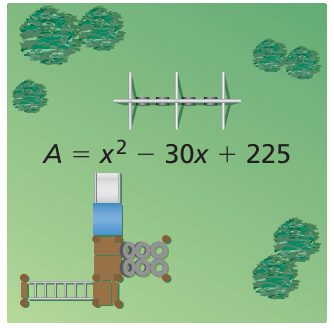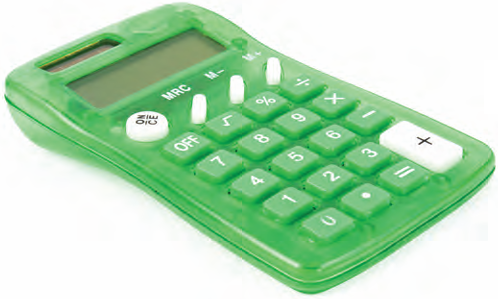FACTORING TRINOMIALS WHEN A IS 1
Subscribe to our ▶️ YouTube channel 🔴 for the latest videos, updates, and tips.
The general form any quadratic equation will be in the form
ax2 + bx + c
To factorize a quadratic polynomial, we have to check whether the coefficient of x2 is 1 or not equal to 1.
Here we see examples on factoring quadratic polynomial when the coefficient x2 is, that is a = 1.
Write each trinomial in factored form (as the product of two binomials).
Problem 1 :
p² + 14p + 48
Solution :
|
Factors of 48 1 and 48 2 and 24 3 and 16 4 and 12 6 and 8 |
Sum 49 26 19 16 14 |
Product 48 48 48 48 48 |
= (p + 6) (p + 8)
Problem 2 :
n² + 10n + 16
Solution :
|
Factors of 16 1 and 16 2 and 8 4 and 4 |
Sum 17 10 8 |
Product 16 16 16 |
= (n + 2) (n + 8)
Problem 3 :
p² + 14p + 40
Solution :
|
Factors of 40 1 and 40 2 and 20 4 and 10 |
Sum 41 22 14 |
Product 40 40 40 |
= (p + 4) (p + 10)
Problem 4 :
r² + 9r + 18
Solution :
|
Factors of 18 1 and 18 2 and 9 3 and 6 |
Sum 19 11 9 |
Product 18 18 18 |
= (r + 3) (r + 6)
Problem 5 :
p² - 8p + 7
Solution :
|
Factors of 7 -1 and -7 |
Sum -8 |
Product 7 |
= (p - 1) (p - 7)
Problem 6 :
b² - 9b + 14
Solution :
|
Factors of 14 -1 and -14 -2 and -7 |
Sum -15 -9 |
Product 14 14 |
= (b - 2) (b - 7)
Problem 7 :
b² - 8b + 15
Solution :
|
Factors of 15 -1 and -15 -3 and -5 |
Sum -16 -8 |
Product 15 15 |
= (b - 3) (b - 5)
Problem 8 :
m² - 16m + 63
Solution :
|
Factors of 63 -1 and -63 -3 and -21 -7 and -9 |
Sum -64 -24 -16 |
Product 63 63 63 |
= (m - 7) (m - 9)
Problem 9 :
k² - 4k – 60
Solution :
|
Factors of -60 1 and -60 2 and -30 3 and -20 5 and -12 6 and -10 |
Sum -59 -28 -17 -7 -4 |
Product -60 -60 -60 -60 -60 |
= (k + 6) (k - 10)
Problem 10 :
m² + m – 6
Solution :
|
Factors of -6 1 and -6 -2 and 3 |
Sum 5 1 |
Product -6 -6 |
= (m - 2) (m + 3)
Problem 11 :
p² - 2p – 15
Solution :
|
Factors of -15 1 and -15 3 and -5 |
Sum -14 -2 |
Product -15 -15 |
= (p + 3) (p - 5)
Problem 12 :
r² + r – 20
Solution :
|
Factors of -20 -1 and 20 -4 and 5 |
Sum 19 1 |
Product -20 -20 |
= (r - 4) (r + 5)
Problem 13 :
The area (in square centimeters) of a square coaster can be represented by
d2 + 8d + 16
a. Write an expression that represents the side length of the coaster.
b. Write an expression for the perimeter of the coaster.

Solution :
a)
Area = d2 + 8d + 16
= d2 + 4d + 4d + 16
Factoring d from first two terms and factoring 4 from the next two terms, we get
= d(d + 4) + 4(d + 4)
= (d + 4)(d + 4)
So, side length of square is (d + 4) cm
b) Perimeter of coaster = 4(side length)
= 4(d + 4)
= (4d + 16) cm
Problem 14 :
The polynomial represents the area (in square feet) of the square playground.
a. Write a polynomial that represents the side length of the playground.
b. Write an expression for the perimeter of the playground.

Solution :
a)
Area = x2 - 30x + 225
= x2 - 15x - 15x + 225
= x(x - 15) - 15(x - 15)
= (x - 15)(x - 15)
So, side length of the square is (x - 15) cm.
b)
Perimeter of square = 4(side length)
= 4(x - 15)
= (4x - 60) cm
Problem 15 :
Tell whether the polynomial can be factored. If not, change the constant term so that the polynomial is a perfect square trinomial.
a. w2 + 18w + 84
b. y2 − 10y + 23
Solution :
a.
= w2 + 18w + 84
84 = 7 x 12 (won't work)
84 = 4 x 21 (won't work)
To make the given quadratic as perfect square, we need to have 81 as constant since we have 18 as a middle term.
= w2 + 9w + 9w + 81
= w (w + 9) + 9(w + 9)
= (w + 9)(w + 9)
= (w + 9)2
b.
y2 − 10y + 23
23 = 1 x 23 (won't work)
To make the given quadratic as perfect square, we need to have 25 as constant since we have -10 as a middle term.
= y2 − 5y - 5y + 25
= y(y - 5) - 5(y - 5)
= (y - 5)(y - 5)
= (y - 5)2
Problem 16 :
The width of a calculator can be represented by (3x + 1) inches. The length of the calculator is twice the width. Write a polynomial that represents the area of the calculator.

Solution :
Width of the calculator = 3x + 1
length = 2(3x + 1)
Area of calculator = (3x + 1) 2(3x + 1)
= 2(3x + 1)2
= 2[(3x)2 + 2(3x)(1) + 12]
= 2 (9x2 + 6x + 1)
So, the required area of the calculator is 2 (9x2 + 6x + 1).
Subscribe to our ▶️ YouTube channel 🔴 for the latest videos, updates, and tips.
Recent Articles
-
Finding Range of Values Inequality Problems
May 21, 24 08:51 PM
Finding Range of Values Inequality Problems -
Solving Two Step Inequality Word Problems
May 21, 24 08:51 AM
Solving Two Step Inequality Word Problems -
Exponential Function Context and Data Modeling
May 20, 24 10:45 PM
Exponential Function Context and Data Modeling